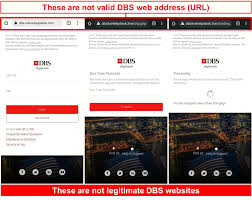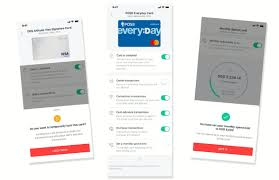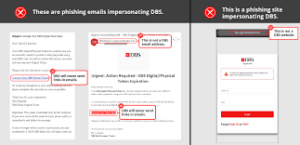Fraud Analytics in Banking
Fraud analytics in banking refers to the systematic use of data analysis, machine learning, and statistical methods to detect, prevent, and manage fraudulent activities in banking transactions and operations. This field has become increasingly sophisticated as financial institutions combat evolving fraud threats while maintaining a smooth customer experience.

Core Components of Banking Fraud Analytics
Data Collection and Integration
The foundation of fraud analytics is comprehensive data collection. Banks gather data from numerous sources:
- Transaction records across all channels (in-person, online, mobile)
- Customer behaviour patterns and history
- Account opening information
- Authentication logs
- External data sources (credit bureaus, watchlists, public records)
This data is integrated into unified platforms that allow for holistic analysis across previously siloed systems. The ability to see connections between seemingly unrelated events is critical for detecting complex fraud schemes.
Detection Methods
Modern fraud analytics employs multiple detection approaches:
Rule-based Systems: These operate on pre-defined rules that flag suspicious activities. For example, a transaction might be flagged if it’s tremendous, occurs in a foreign country, or happens at an unusual time. While relatively simple, these systems catch blatant fraud attempts and serve as a first line of defence.

Anomaly Detection: These algorithms establish baseline behaviors for accounts and customers, then flag deviations. For instance, if a customer typically makes small local purchases but suddenly makes large international transactions, the system would identify this as anomalous.
Network Analysis: This approach examines relationships between entities (customers, accounts, devices, IP addresses) to identify suspicious patterns. It’s particularly effective at uncovering organized fraud rings where multiple accounts may be connected.
Machine Learning Models: Advanced models learn from historical fraud cases to predict future fraud. These include:
- Supervised learning (using labelled fraud data)
- Unsupervised learning (identifying unusual patterns without labelled data)
- Deep learning (detecting complex patterns in large datasets)
Real-time Analysis

Modern banking requires instant decision-making. Fraud analytics systems now operate in real-time, evaluating transactions as they occur and making split-second approve/decline decisions. This presents technical challenges in processing massive data volumes with minimal latency.
Applications in Banking
Transaction Fraud
This includes detecting fraudulent credit card transactions, ACH fraud, wire transfer fraud, and other payment-related crimes. Systems analyze transaction attributes (amount, location, merchant category), customer history, device information, and behavioural biometrics to score risk.

Account Takeover Prevention
Analytics detect when legitimate accounts have been compromised by monitoring for behavioural changes, unusual access patterns, or suspicious authentication attempts. Sudden changes in transaction patterns, login locations, or navigation behaviour might indicate an account takeover.

New Account Fraud
Fraudsters often open accounts using synthetic or stolen identities. Analytics systems verify application information against multiple data sources, checking for inconsistencies or known fraud indicators.
Internal Fraud Detection
Employee fraud represents a significant risk. Analytics systems monitor employee actions for unusual patterns, policy violations, or suspicious privileged access to customer accounts.
Advanced Techniques in Modern Fraud Analytics

Behavioral Biometrics
These systems analyze how users interact with devices and applications:
- Typing patterns and speed
- Mouse movements and gestures
- How a phone is held or swiped
- Voice patterns
A fraudster using stolen credentials will interact with systems differently than the legitimate user, allowing for an additional layer of authentication.
Consortium Data
Banks increasingly share anonymized fraud data through industry consortiums, allowing them to benefit from collective intelligence. If a new fraud pattern emerges at one bank, others can quickly implement defences before being targeted.

Artificial Intelligence and Machine Learning
The most advanced systems now use AI to:
- Automatically adjust rules and thresholds based on emerging patterns
- Identify new fraud vectors without human guidance
- Reduce false positives by learning from analyst feedback
- Adapt to changing customer behaviours during events like pandemics or holidays
Challenges in Banking Fraud Analytics
False Positives

Overly sensitive systems can flag legitimate transactions as fraudulent, causing customer frustration and increasing operational costs. Balancing fraud detection with customer experience remains a significant challenge.
Adversarial Adaptation
Fraudsters study bank defences and adapt their techniques accordingly. This creates an ongoing arms race, requiring continuous evolution of analytics systems.
Data Privacy Concerns
Collecting comprehensive data for fraud detection must be balanced against privacy regulations like GDPR, CCPA, and industry standards. Banks must maintain transparency about data usage while not revealing too much about their detection methods.

Model Explainability
Advanced machine learning models can be “black boxes,” making it difficult to explain why certain transactions were flagged. Regulators increasingly demand explainable AI in financial services, creating tension between model sophistication and transparency.

Banking fraud analytics continues to evolve, with banks investing heavily in artificial intelligence, machine learning, and data science talent. As digital banking expands and fraudsters become more sophisticated, the importance of robust analytics in maintaining the security and integrity of the financial system only grows.
Top Tools for Fraud Analytics in Banking
The landscape of fraud analytics tools in banking has evolved considerably to combat increasingly sophisticated threats. Modern banking institutions typically employ a multi-layered approach, combining several specialised tools rather than relying on a single solution. Let me walk you through the most significant categories and prominent tools in this space.
Enterprise Fraud Management (EFM) Platforms
These comprehensive platforms serve as the backbone of most banks’ fraud detection infrastructure. They integrate multiple data sources and provide end-to-end fraud management capabilities.
NICE Actimize is an industry leader, offering a unified platform that covers various fraud types, including payment fraud, application fraud, and account takeover. What makes Actimize particularly powerful is its ability to create a holistic customer risk profile by analysing behaviours across multiple channels simultaneously.

SAS Fraud Management leverages advanced analytics and machine learning to detect fraudulent activities in real time. Its strength lies in hybrid analytics that combines rules, anomaly detection, and machine learning models. Banks particularly value its ability to reduce false positives through adaptive learning from analyst feedback on alerts.
FICO Falcon Fraud Manager protects over 2.6 billion payment cards worldwide, making it perhaps the most widely deployed fraud solution. Falcon pioneered the use of neural networks in fraud detection and continues to evolve with advanced AI capabilities. One of its distinguishing features is its consortium data, which allows banks to benefit from fraud patterns detected across the entire network of Falcon users.
Specialised Fraud Detection Solutions
While EFM platforms provide broad coverage, specialised tools focus on specific fraud vectors with greater depth.
BioCatch specialises in behavioural biometrics, analysing how users interact with devices and applications. It creates behavioural profiles based on hundreds of parameters, such as typing patterns, mouse movements, and navigation habits. This technology excels at catching account takeover attempts, where fraudsters have valid credentials but interact with systems differently than legitimate users.

Feedzai employs machine learning to detect fraudulent transactions in real time across multiple channels. Its RiskOps platform is particularly valuable for banks dealing with large transaction volumes, as it can process thousands of events per second with minimal latency. Feedzai’s hypergraph technology creates visual representations of connections between entities, making it easier for analysts to investigate complex fraud networks.
DataVisor uses unsupervised machine learning to detect unknown fraud patterns without requiring labelled training data. This approach helps banks identify new fraud schemes before they become widespread. DataVisor’s Solution Suite provides comprehensive coverage across the customer lifecycle, from account opening to ongoing transaction monitoring.
Identity Verification and Authentication Tools
As digital banking expands, robust identity verification becomes increasingly crucial.
Jumio combines AI, biometrics, and computer vision to verify customer identities during digital onboarding. Its technology can extract and verify information from identity documents, match selfies to document photos and detect manipulated documents. Banks particularly value Jumio’s ability to streamline customer onboarding while maintaining strong fraud controls.
Socure specialises in identity verification and fraud prevention for digital banking. Its ID+ platform uses machine learning to analyse thousands of data points from diverse sources to verify identities and assess risk. Socure’s ability to verify thin-file customers (those with limited credit history) makes it particularly valuable for banks seeking to expand financial inclusion.

Analytics and Investigation Platforms
These tools help fraud analysts investigate alerts, understand patterns, and make data-driven decisions.
Splunk serves as a powerful data analytics platform that can ingest, index, and analyse massive volumes of machine data. Though not exclusively a fraud tool, many banks leverage Splunk for fraud detection by analysing logs, transactions, and user behaviours. Its strength lies in correlating events across disparate systems to identify suspicious patterns that might otherwise go unnoticed.
IBM i2 Analyst’s Notebook provides visual analysis capabilities to help fraud investigators understand complex fraud networks. It excels at visualising relationships between accounts, transactions, and entities, making it easier to uncover organised fraud rings. Investigators can use temporal analysis features to understand how fraud schemes evolve.
ThetaRay uses unsupervised AI to detect financial crime anomalies across multiple data sources. Its “artificial intuition” approach is efficient for identifying complex money laundering schemes and previously unknown fraud patterns. ThetaRay’s ability to explain AI decisions helps banks satisfy regulatory requirements for model transparency.

Emerging Technologies and Future Trends
The fraud analytics landscape continues to evolve rapidly with several emerging approaches:
Companies like IBM and D-Wave are exploring quantum computing applications to identify patterns in enormous datasets that would be impractical for classical computing systems. While still emerging, quantum approaches could revolutionise fraud detection by analysing exponentially more complex patterns.
Federated learning allows banks to train fraud models collaboratively without sharing sensitive customer data. This approach, pioneered by companies like Google and increasingly adopted in financial services, helps overcome data privacy barriers while still benefiting from collective intelligence.
Synthetic data generation tools like mostly.ai and Hazy enable banks to create artificial but statistically representative datasets for training fraud models without privacy concerns. This is particularly valuable for modelling rare fraud scenarios that might be underrepresented in historical data.
Banking institutions typically deploy several of these tools in concert, creating a defence-in-depth strategy that addresses different aspects of fraud risk. The most effective approaches integrate these diverse tools into a unified framework that balances fraud prevention with customer experience and operational efficiency.

Secure browsing
When it comes to staying safe online, using a secure and private browser is crucial. Such a browser can help protect your personal information and keep you safe from cyber threats. One option that offers these features is the Maxthon Browser, which is available for free. It comes with built-in Adblock and anti-tracking software to enhance your browsing privacy.
By utilising Maxthon Browser, users can browse the internet confidently, knowing that their online activities are shielded from prying eyes. The integrated security features alleviate concerns about potential privacy breaches and ensure a safer browsing environment. Furthermore, the browser’s user-friendly interface makes it easy for individuals to customise their privacy settings according to their preferences.

Maxthon Browser not only delivers a seamless browsing experience but also prioritises the privacy and security of its users through its efficient ad-blocking and anti-tracking capabilities. With these protective measures in place, users can enjoy the internet while feeling reassured about their online privacy.
In addition, the desktop version of Maxthon Browser works seamlessly with their VPN, providing an extra layer of security. By using this browser, you can minimise the risk of encountering online threats and enjoy a safer internet experience. With its combination of security features, Maxthon Browser aims to provide users with peace of mind while they browse.
Maxthon Browser is a reliable choice for users who prioritise privacy and security. With its robust encryption measures and extensive privacy settings, it offers a secure browsing experience that gives users peace of mind. The browser’s commitment to protecting user data and preventing unauthorised access sets it apart in the competitive web browser market.
